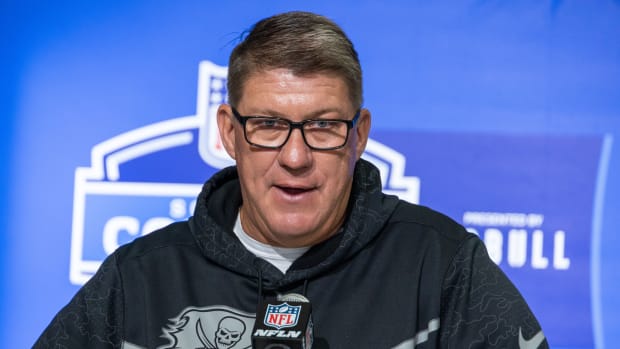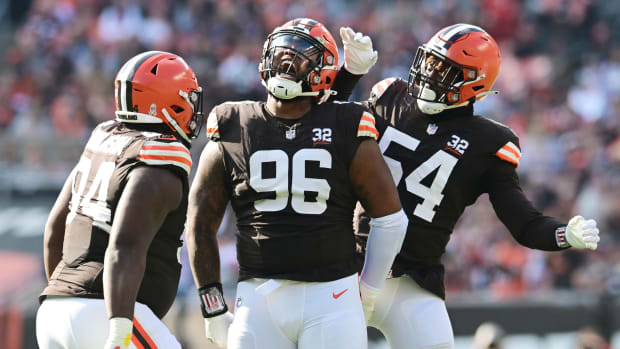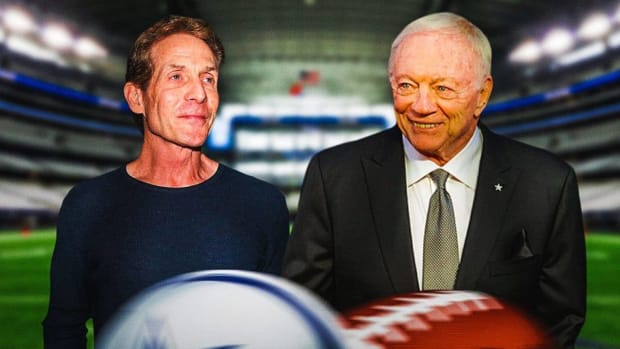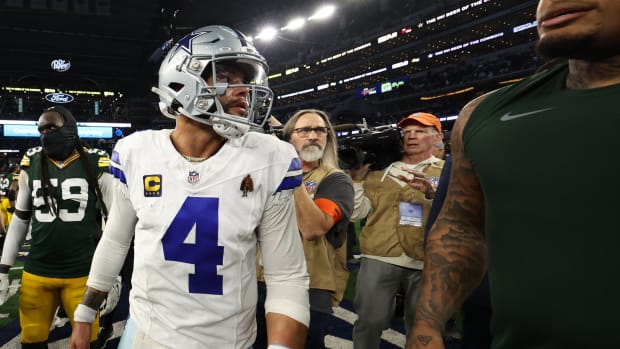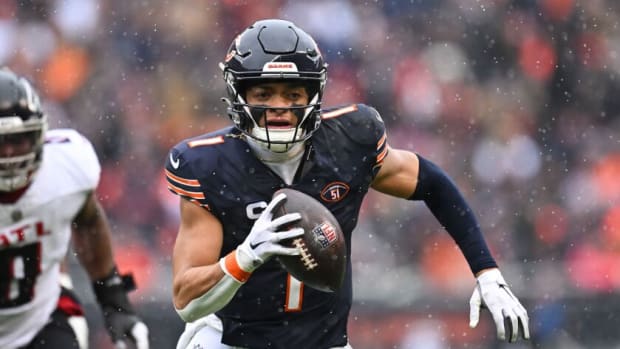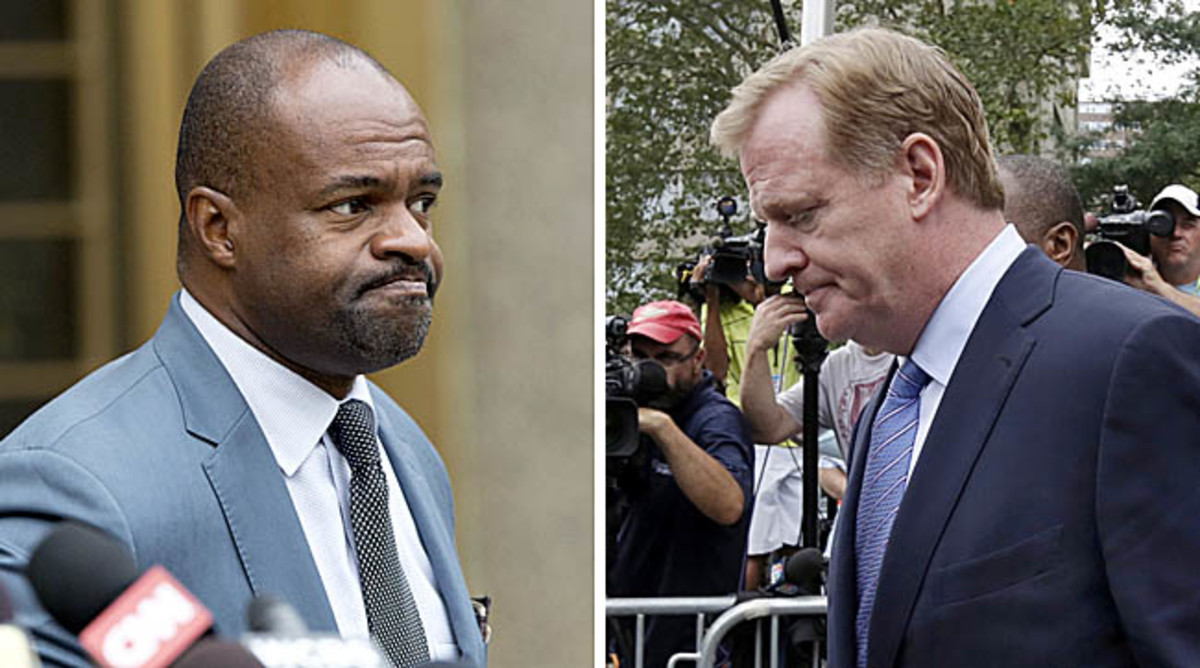
The NFLPA Won the Brady Battle; Can They Win the War?
Since the startling rebuke of the NFL by Judge Berman two weeks ago, ruling for Tom Brady and the NFLPA, DeMaurice Smith and the Players’ Association have rightfully been taking a few victory laps (Smith and NFLPA counsel Jeffrey Kessler literally took a victory lap around the Gillette Stadium field before the Patriots’ season opener last week). A truer test of victory, however, is whether the NFLPA can now leverage these judicial gains into inclusion in the systemic disciplinary process of NFL players. Knowing the NFL owners’ mindset on “giving” to the NFLPA, I am not optimistic that will happen.
In an interview with Mike and Mike on ESPN Radio, Roger Goodell admitted being open to some independence—perhaps even a panel—in the first level of discipline (the NFL already has former Director of the Bureau of Alcohol, Tobacco and Firearms, Todd Jones, assessing initial discipline on domestic violence). Goodell, however, still appears adamant about retaining appeal power, which, of course, is the more important function. The union would like it the other way around: Goodell could hand out initial discipline, with independent oversight above him.
There is an element of déjà vu to all of this. At this time last year, following the Ray Rice disciplinary blunders, Goodell admitted to being open to NFLPA inclusion in formulating a new and improved plan to address player conduct. Of course, those were simply words; the NFLPA was largely ignored as the NFL crafted its new conduct policy. We’ll now see if the Brady missteps force more of a reaction than the Rice missteps a year ago.
On a more macro level, a report from the Washington Post raised the possibility of the NFLPA receiving its desired independent arbitration as a tradeoff for an extension of the current CBA, presently slated to run through the 2020 season. When I read this, I shook my head; NFL owners are diabolical negotiators. Of course, they would make this trade in a heartbeat, giving the union a chip (1) with no economic consequences, (2) affecting only a handful of players a year, and (3) already being contemplated by owners to implement unilaterally.
If there were any truth to this report of an exchange of more independent discipline for an extension of a team-friendly economic structure, every NFL owner would run to sign it before the union changed its mind.
Careful Where You Wish For
Speaking of the CBA, Judge Berman’s landmark decision vacating Tom Brady’s suspension may have been only the second-most important judicial decision of the month. Judge Michael Davis—in a federal district court in Minnesota—ruled for the NFL in the “collusion case” revolving around the uncapped 2010 league year and the NFLPA allegations of a “secret cap,” pointing to later cap penalties assessed to Washington and Dallas (although the union signed off on those penalties). Judge Davis noted the union “decided to release unknown claims in order to end the lockout. Belated regret over that decision is not a basis for relief.”
There are interesting parallels between the cases. Judge Berman never dealt with the innocence or guilt of Brady regarding deflated footballs; Judge Davis never dealt with the innocence or guilt of NFL owners regarding collusion. And here is the ultimate irony: in the New York court to which the NFL directed the Brady case, the league lost. In the Minnesota court to which the NFLPA directed the collusion case, the union lost. And while Judge Berman in New York ruled the NFL was not safeguarded in its case by the language of the CBA, Judge Davis in Minnesota (the player-friendly venue) ruled it was.
Courtroom football has taken a couple of “careful what—or where—you wish for” turns this month. A potential threat to the NFL’s prosperity was removed in, of all places, the Minnesota district court.

Dareus, Green, Kuechly and Eli all got paid before the regular season "deadline." (Bill Wippert/AP; Thearon W. Henderson/Getty Images; Streeter Lecka/Getty Images; Joe Robbins/Getty Images)
’Tis the Season
There are two flashpoint dates on the NFL calendar that teams and agents point to as times to secure contract extensions, before the start of (1) free agency, when teams prevent players from seeing what may be behind Door No. 2, and (2) the regular season, when front offices and agents largely close the book on the business of football for 2015. Deadlines spur action, and some serious spending. Marcell Dareus, Luke Kuechly, A.J. Green and Eli Manning secured top-of-market extensions last week with additional extensions for players such as Tyrone Crawford, Anthony Castonzo and Jarius Wright.
Dareus, who has had issues off the field, receives a $25 million signing bonus as part of an eye-popping $42.9 million guaranteed at signing (signing bonus plus 2015 and 2016 salaries plus a 2016 $7 million option bonus). Kuechly was zoomed past the inside linebacker market of roughly $10 million per year with a contract averaging $12.4 million.
Green’s deal is only guaranteed for 2015, as the Bengals were able to maintain that important precedent also used with quarterback Andy Dalton. Green, however, has strong early cash flow—he’ll earn $32.75 million by March (assuming he is on the roster then)—and positions firmly within this year’s established marketplace of Dez Bryant, Demaryius Thomas and Julio Jones. I was secretly hoping that Jones or Green would wait until next year to negotiate from a stronger leverage point than they had this year, even with an applied franchise tag. Teams know that it takes a truly rare case for a player turn down $20 million or more in the first year of a contract. For those rare players who wait, resisting the temptation to do a deal before free agency, there can be eye-popping results (see Suh, Ndamokung and Maxell, Byron).
Like his brother three years ago, Manning has qualms in using his considerable leverage to become the highest paid quarterback in the league, yet secured a four-year, $84 million extension that puts him right near the top (while appearing “reasonable” in doing so). Contrasted with the young players above, contract negotiations are quite different with veterans already at a top earning level. Eli was scheduled to make $17 million this year regardless, a starting point $15.5 million higher than Russell Wilson’s (both received $31 million signing bonuses). With this view, Eli’s $68 million over the first three years is really “only” $51 million of new earnings.
In a few years time, the Manning brothers will be right at the top in the list of players with most career earnings in professional football.
Hard Knocks Life
As another edition of Hard Knocks is now in the books, I always recall the NFL approaches about the Packers appearing on the program. I would get the call annually from the league, as they hoped our minds were more open to it than the year before. Inevitably in our internal meeting, before I could finish the sentence, So what if we agreed to be featured on Hard…? I heard a resounding No! from the room. The reasons were several, but boiled down to seeing no advantage, only potential disadvantage, and not needing (or seeking) more brand exposure.
The best part of Hard Knocks, in my opinion, is player interaction and their understanding—or lack thereof—of how fleeting their opportunity is, as many of the NFL’s August rosters are doing something else in September. In that sense, defensive back Charles James was my MVP of this year’s program (James was released and is now with the Ravens).
This dilemma of Hard Knocks is the push-pull that goes on in many situations over the course of a year between the two sides of an NFL franchise: the business/marketing side and the football operations side. The league and team marketing side are always interested in more access—that is what the public wants—while the football side is holding the dam against that deluge of requests for access. It is something that will only become more pronounced.
































